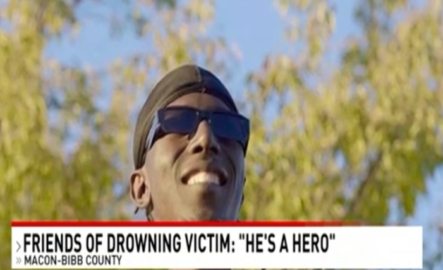It was a known and feared pestilence for which no cause or effective treatment was known at the close of the 19th century. The yellow fever disease wreaked havoc and terrorized populations, severely disrupting trade.
The medical profession was in the dark on many aspects of the dreaded illness. Nonetheless, accumulated observations had rendered certain facts clear: It occurred in epidemic and endemic form; it was associated with ports, and new outbreaks were often associated with the arrival of a ship from a known focus; a transmittable “germ” was presumed, but transmission was not direct, and recovery from the disease conferred durable immunity.
Again, at the close of the 19th century also witnessed dramatic discoveries in the new science of bacteriology that would transform medicine forever. Several investigators claimed to have found bacteria responsible for yellow fever, and the first “vaccines” were created from these candidates.
But a thorough investigation by an army doctor by the name Dr. George Sternberg, often called the “father of American bacteriology” found the vaccines poorly conceived or ineffective—therefore by the turn of the century, there was essentially no progress in yellow fever prevention.
Yellow fever became particularly America’s concern after the Spanish-America War because it had become “notoriously endemic” in Cuba. Sanitation measures in Havana failed to curb the rising incidence.
How the disease spreads remained unfathomable for centuries, and there were no means for rational intervention. The establishment of a Yellow Fever Commission in 1900, headed by a United States Army Surgeon Walter Reed would change the situation. Through meticulous studies and experiments, it was established that mosquitoes transmitted the disease and the agent was filterable through a Berkefeld filter, excluding a bacterial agent.
Bacteria-based vaccines quickly became inexistent and many attempts to infect laboratory animals failed, however, leaving the scientific community without a laboratory model. An attempt to bypass this difficulty was made in 1901, when Dr. John Guiteras, based in Havana, noted the low mortality in the Reed experiments (14 inoculations and no deaths) and attempted to immunize subjects with a tiny dose (one to four mosquito bites each) of live agent.
Eight out of 42 volunteers became ill, unfortunately, and three died. Further work on immunization came to a halt, and most attention henceforth focused on prevention through mosquito control.
After the opening of the Panama Canal in 1912, large “unseasoned” populations around the world suddenly were liable to Yellow fever exposure. The Rockefeller Foundation’s International Health Commission then stepped in with the resolve to assist in yellow fever eradication.
A team was deployed to Guayaquil, Ecuador, a residual endemic center in 1918 to implement control measures. Hideyo Noguchi was part of the team. Born in Japan, Noguchi rose from extreme poverty to earn a medical degree and eventually distinguished himself by the discovery of spirochetes in brain tissue of paretics.
Noguchi also discovered another spirochete, Leptospira icterohemorrhagiae, as the cause of Weil’s disease and pushed the theory that Weil’s disease and yellow fever might be identical or closely related diseases. He then set out to sought spirochetes in Ecuador. He found some in the livers of “yellow fever” patients and was able to pass them easily to guinea pigs. In short order, he produced a vaccine and antiserum against yellow fever, both manufactured at the Rockefeller Institute and used quite extensively in the United States, Latin America, and French African colonies.
Noguchi published “successful” results on 7,964 vaccinations. But seasoned investigators could not duplicate his results, and doubts grew. The sloppy statistics of the vaccine trials, the established easy filterability of the causative agent, and the inability of others to infect laboratory animals were facts that Noguchi could not explain away.
Then, in 1926, Max Theiler, born in South Africa and son of a veterinarian, and Andrew Watson Sellards showed that the L. icteroides obtained from Noguchi was serologically identical with L. icterhemorrhagica.
That forced the Rockefeller Foundation to quietly discontinue its distribution of the vaccine, and there was no alternate candidate.
Fast forward in June 1927, blood from a 28-year-old African named Asibi suffering from a relatively mild febrile illness, which he survived, was injected into a Macacus rhesus imported from India–African monkeys did not become ill. The monkey proved susceptible, establishing the infection for the first time in a suitable laboratory host.
That was an important breakthrough, as the viral nature of the agent was confirmed using this animal system. The isolated virus was named the Asibi strain after the 28-year-old West African yellow fever survivor who provided the blood sample.
The breakthrough, because of a chance mutation, resulted in a strain that appeared to be sufficiently attenuated to use without protective immune serum. It was given the name 17D.
At this point, field testing and preparations for large scale manufacturing of vaccines were in order. In 1937, Hugh Hollingsworth Smith a virologist at the Rockefeller Foundation began the project in Brazil—a 13-day sea voyage at that time. The jungle cycle of yellow fever had been established at that time and the goals of vaccination altered to containing the disease rather than eliminating it.
The newly invented techniques of culturing virus in embryonated eggs and freeze-drying were now available and utilized and within a year, 59,000 people were vaccinated with the 17D strain without severe complications. By June 1939, the number was up to 1.3 million people, without further problems. Smith moved on to Colombia, where he initiated another successful program.
In sum, that was how a strain from the 28-year-old African man Asibi, believed to be a Ghanaian led to the discovery of the Yellow Fever vaccine – a vaccine that if one doesn’t have the proof of taking he or she could not travel.










